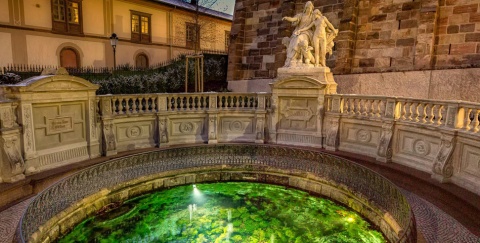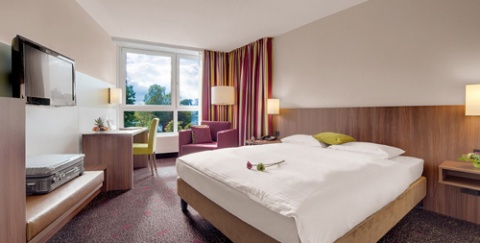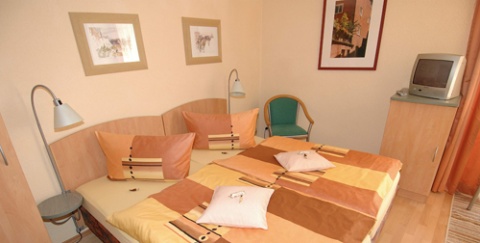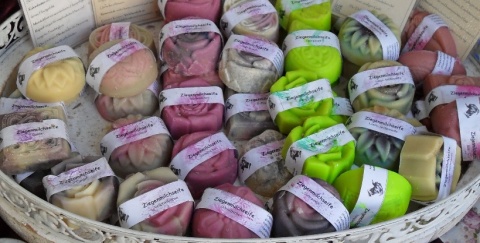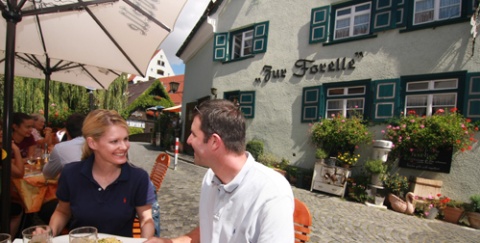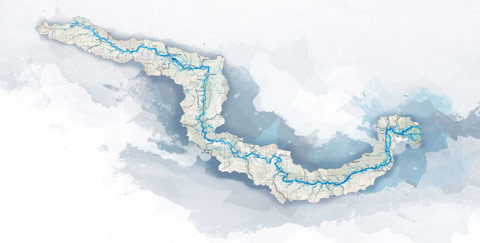
Danube Cycle Route: from the river's source to the Austrian border
The Danube Cycle Route follows the entire length of the river – from its source in Germany to its delta on the Black Sea. The German stretch of the route runs for 609 kilometres from Donaueschingen to Passau and could hardly be any more beautiful. ...
City: Ulm
Country: Germany
Danube Cycle Route: from the river's source to the Austrian border
The Danube Cycle Route is one of the best maintained and best known cycle trails anywhere on earth, popular for its relatively flat terrain and a suitable choice for families. It is the king of all the Danube cycleways and is joined and intersected at various points by trails that share its route for a short distance or for longer stretches. Along the way, the Danube Cycle Route delivers one highlight after another: historical ones, scenic ones, cultural ones and not least culinary ones. Thanks to the wealth of hotels, inns, guesthouses and campsites all along the wayside, you can plan your route and split up your tour however suits you best. After all, you'll want to make regular stops to soak up the surroundings. Of course, the more time you have, the more you can explore.
The first stage of the Danube Cycle Route is one of its most scenic. Before setting off, be sure to peer into the perfectly still, perfectly circular Danube source in Donaueschingen. Just a short while later, at Immendingen, the Danube sinks back into the karst rock before eventually breaking back through the Jura stone after Fridingen. En route to Sigmaringen the trail brushes past Beuron Archabbey, Wildenstein Castle and Werenwag Castle. Historical riverside towns such as Mengen, Riedlingen, Zwiefalten and Ehingen are real gems and well worth exploring on the journey towards Ulm, which itself merits a detour for the minster with the world's tallest church tower. The picturesque town of Donauwörth is another key checkpoint on this stretch of the route, as is Kelheim with its monumental Hall of Liberation, which is situated on an especially flat section of the path. The beautiful city of Ingolstadt was first mentioned in records dating back to 806 and is the birthplace of the German Beer Purity Law. The next major attraction on the route is the unforgettable Danube Gorge at Weltenburg, a natural wonder best viewed from aboard a riverboat. Beyond Kelheim the Danube leisurely meanders its way onwards, cutting large arcs through a landscape of gently rolling hills. The cycle path itself remains on the flat all the way to another star attraction, Regensburg – considered by many to be the most beautiful city in Germany, if not the world. Two thousand years of history, a wealth of historical buildings, a truly stunning centre and the famous bratwurst – what more could you want? From Regensburg the river continues through a wide expanse of fertile river meadows. The further east you cycle, the more baroque abbeys and palaces you'll come across on the path's edge – the difficult bit is deciding which ones to visit, because they are all a sight to behold. Another vision of beauty is Straubing, a town offering an array of visitor attractions such as the clock tower, the fortress, the town hall, the water tower, the Basilica of St. James and St. Tiburtius, and a whole host of ancient churches. The last part of the German Danube Cycle Route, from Bogen to Passau, bears the quintessential characteristics of baroque, most notably in the towns of Deggendorf, Osterhofen and Vilshofen and of course in Passau itself – the town on three rivers and a dazzling finale to the route.
The first stage of the Danube Cycle Route is one of its most scenic. Before setting off, be sure to peer into the perfectly still, perfectly circular Danube source in Donaueschingen. Just a short while later, at Immendingen, the Danube sinks back into the karst rock before eventually breaking back through the Jura stone after Fridingen. En route to Sigmaringen the trail brushes past Beuron Archabbey, Wildenstein Castle and Werenwag Castle. Historical riverside towns such as Mengen, Riedlingen, Zwiefalten and Ehingen are real gems and well worth exploring on the journey towards Ulm, which itself merits a detour for the minster with the world's tallest church tower. The picturesque town of Donauwörth is another key checkpoint on this stretch of the route, as is Kelheim with its monumental Hall of Liberation, which is situated on an especially flat section of the path. The beautiful city of Ingolstadt was first mentioned in records dating back to 806 and is the birthplace of the German Beer Purity Law. The next major attraction on the route is the unforgettable Danube Gorge at Weltenburg, a natural wonder best viewed from aboard a riverboat. Beyond Kelheim the Danube leisurely meanders its way onwards, cutting large arcs through a landscape of gently rolling hills. The cycle path itself remains on the flat all the way to another star attraction, Regensburg – considered by many to be the most beautiful city in Germany, if not the world. Two thousand years of history, a wealth of historical buildings, a truly stunning centre and the famous bratwurst – what more could you want? From Regensburg the river continues through a wide expanse of fertile river meadows. The further east you cycle, the more baroque abbeys and palaces you'll come across on the path's edge – the difficult bit is deciding which ones to visit, because they are all a sight to behold. Another vision of beauty is Straubing, a town offering an array of visitor attractions such as the clock tower, the fortress, the town hall, the water tower, the Basilica of St. James and St. Tiburtius, and a whole host of ancient churches. The last part of the German Danube Cycle Route, from Bogen to Passau, bears the quintessential characteristics of baroque, most notably in the towns of Deggendorf, Osterhofen and Vilshofen and of course in Passau itself – the town on three rivers and a dazzling finale to the route.
DANUBE.TRAVEL has no control over the website content generated by users and/or visitors, neither such content represents a statement, opinion, recommendation or rating by DANUBE.TRAVEL. For further information please refer to DANUBE.TRAVEL – General Website Terms and Conditions of Use.
Places near this location
Where to stay
What to do
Danube experience
My Danube
Trip Plan
Your Trip Plan is currently empty. Add a city, location or route to create your trip plan.
 EN
EN DE
DE
